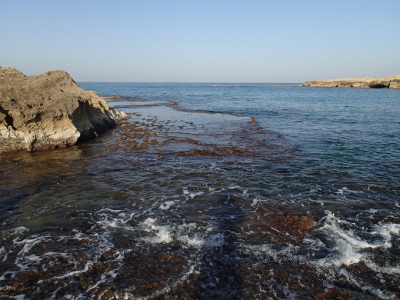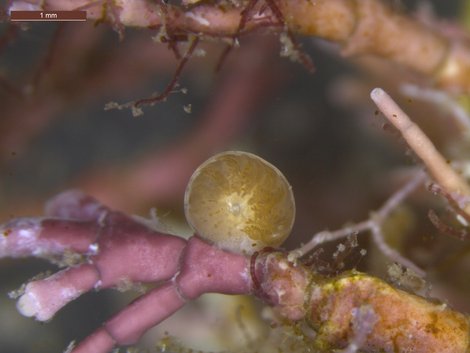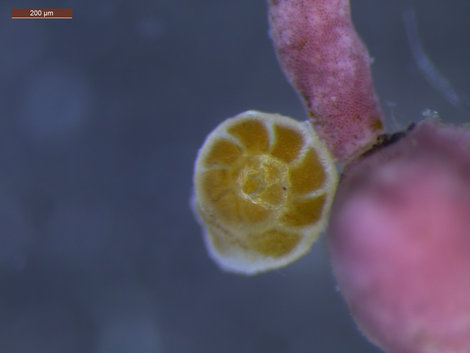Page path:
- AG Kucera
- Research
- Biology of Foraminifera
- Foraminifera and global change
Foraminifera and global change
Research question and location
We are working to determine how the physiology of benthic foraminifera responds to changing environmental conditions, most prominent elevated temperatures. We work on several species, such as Amphistegina lobifera and Pararotalia calcariformata from the Mediterranean and Red Sea.
In aquaria tank and incubator experiments we culture these species and measure growth rateat different ontogenetic stages, photophysiology of the symbionts and respiration. Experiments are carried out on adult stages or juvenile forms to understand physiological response during recruitment and colonization of new habitats.
In aquaria tank and incubator experiments we culture these species and measure growth rateat different ontogenetic stages, photophysiology of the symbionts and respiration. Experiments are carried out on adult stages or juvenile forms to understand physiological response during recruitment and colonization of new habitats.

Bedrock formation in Nachscholim Nationalpark, Israel - one of our sampling locations
Contact
Relevant Publications
Schmidt C, Kucera M, Uthicke S (2014) Combined effects of warming and ocean acidification on coral reef Foraminifera Marginopora vertebralis and Heterostegina depressa. Coral Reefs 33:805-818
Schmidt, C., Heinz, P., Kucera, M., Uthicke, S. (2011) Temperature induced stress leads to bleaching in larger benthic Foraminifera hosting endosymbiotic diatoms, Limnology & Oceanography, 56: 5, 1587–1602
Schmidt, C., Heinz, P., Kucera, M., Uthicke, S. (2011) Temperature induced stress leads to bleaching in larger benthic Foraminifera hosting endosymbiotic diatoms, Limnology & Oceanography, 56: 5, 1587–1602
Main species we study

Amphistegina lobifera on Jania sp.

Pararotalia calcariformata on Jania sp.


